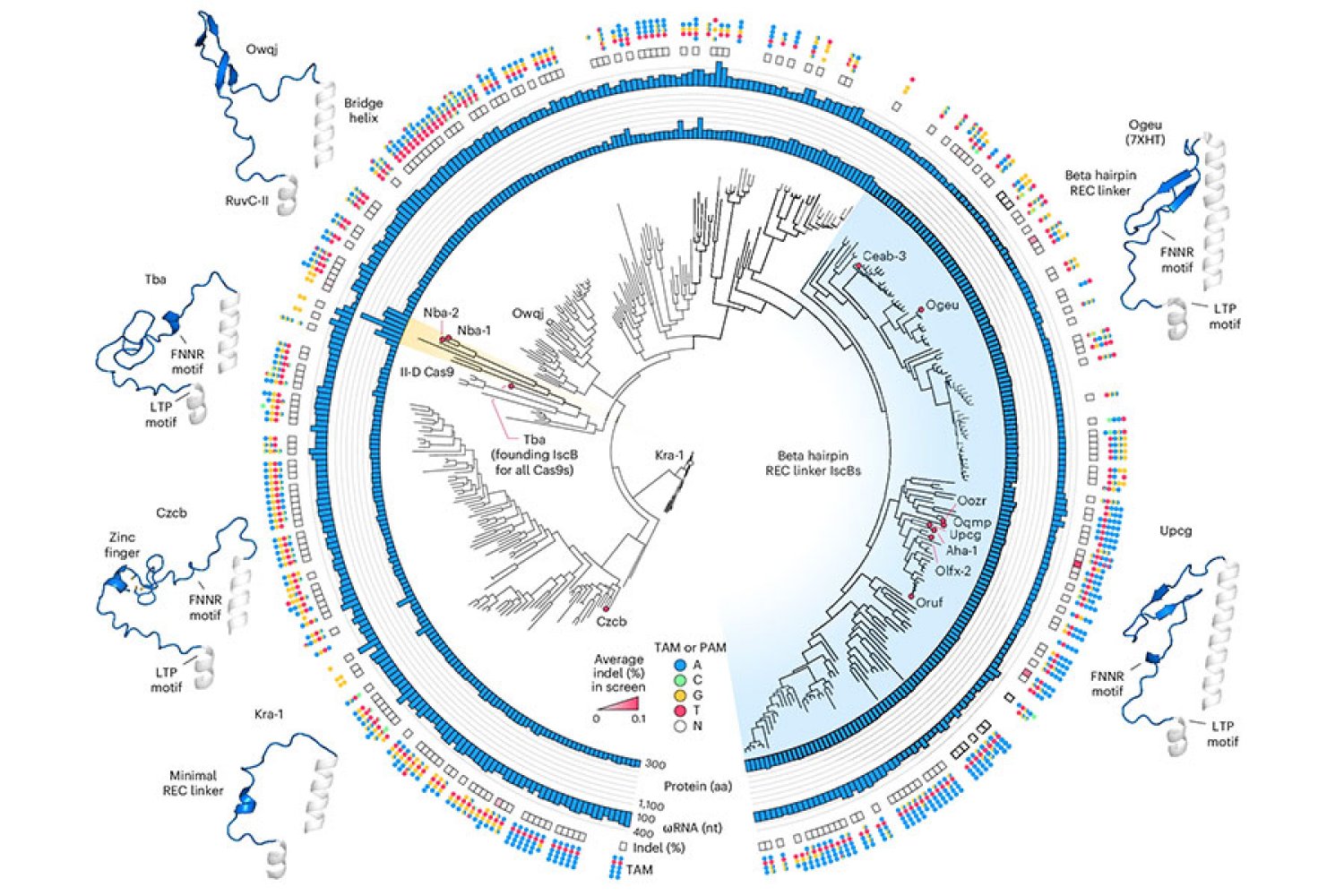Introduction to Genome Editing
Scientists at the McGovern Institute for Brain Research at MIT and the Broad Institute of MIT and Harvard have made a significant breakthrough in the field of genome editing. They have re-engineered a compact RNA-guided enzyme found in bacteria into an efficient, programmable editor of human DNA. This protein, called NovaIscB, can be adapted to make precise changes to the genetic code, modulate the activity of specific genes, or carry out other editing tasks.
What is NovaIscB?
NovaIscB is derived from a bacterial DNA cutter that belongs to a family of proteins called IscBs. IscBs are a type of OMEGA system, the evolutionary ancestors to Cas9, which is part of the bacterial CRISPR system that has been developed into powerful genome-editing tools. Like Cas9, IscB enzymes cut DNA at sites specified by an RNA guide. By reprogramming that guide, researchers can redirect the enzymes to target sequences of their choosing.
Advantages of NovaIscB
IscBs had caught the team’s attention not only because they share key features of CRISPR’s DNA-cutting Cas9, but also because they are a third of its size. This smaller size is an advantage for potential gene therapies: compact tools are easier to deliver to cells, and with a small enzyme, researchers would have more flexibility to tinker, potentially adding new functionalities without creating tools that were too bulky for clinical use.
Engineering NovaIscB
To begin the engineering process, researchers searched for an IscB that would make a good starting point. They tested nearly 400 different IscB enzymes that can be found in bacteria. Ten were capable of editing DNA in human cells. However, even the most active of those would need to be enhanced to make it a useful genome editing tool. The challenge would be increasing the enzyme’s activity, but only at the sequences specified by its RNA guide.
Optimizing NovaIscB for Human Genome Editing
The team leveraged information about the diversity of bacterial IscBs and how they evolved to optimize IscB for human genome editing. They suspected that the enzyme might need a segment called REC to interact with the DNA in human cells. When they took a closer look at the region, structural modeling suggested that by slightly expanding part of the protein, REC might also enable IscBs to recognize longer RNA guides.
Results and Applications
In the end, the team generated a protein they called NovaIscB, which was over 100 times more active in human cells than the IscB they had started with, and that had demonstrated good specificity for its targets. The team demonstrated that NovaIscB is a good scaffold for a variety of genome editing tools. With different modifications, the researchers used NovaIscB to replace specific letters of the DNA code in human cells and to change the activity of targeted genes.
Therapeutic Potential
The NovaIscB-based tools are compact enough to be easily packaged inside a single adeno-associated virus (AAV) — the vector most commonly used to safely deliver gene therapy to patients. Because they are bulkier, tools developed using Cas9 can require a more complicated delivery strategy. Demonstrating NovaIscB’s potential for therapeutic use, the team created a tool called OMEGAoff that adds chemical markers to DNA to dial down the activity of specific genes.
Conclusion
The development of NovaIscB is a significant breakthrough in the field of genome editing. Its compact size and programmability make it a promising candidate for developing gene therapies to treat or prevent disease. The team expects that NovaIscB can be used to target genome editing tools to most human genes, and look forward to seeing how other labs deploy the new technology.
FAQs
- What is NovaIscB?: NovaIscB is a compact RNA-guided enzyme that can be adapted to make precise changes to the genetic code, modulate the activity of specific genes, or carry out other editing tasks.
- How is NovaIscB different from other genome editing tools?: NovaIscB is smaller than other genome editing tools, making it easier to deliver to cells and more flexible to tinker with.
- What are the potential applications of NovaIscB?: NovaIscB has the potential to be used to develop gene therapies to treat or prevent disease, and can be used to target genome editing tools to most human genes.
- How was NovaIscB developed?: NovaIscB was developed through a rational engineering approach, guided by the team’s knowledge of IscBs’s natural evolution and predictions of how each alteration would impact the protein’s structure.











